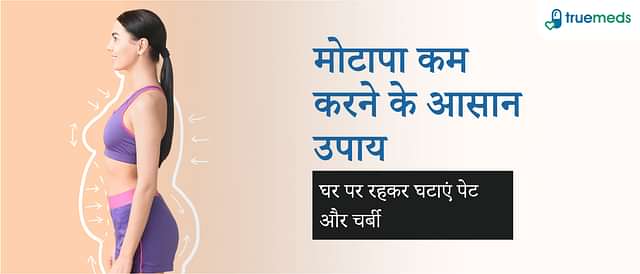What is Presbyopia? symptoms and causes
Last updated on : 20 May, 2024
Read time : 7 min
What is Presbyopia?
Presbyopia is an eye ailment that affects your ability to swiftly concentrate on close things.
Because it is a normal component of ageing, it can be easily treated. These often begin to develop at the age of 40 and steadily worsen until it reaches their peak in the late 60s. For the most part, it won’t hinder your ability to see in the distance at all.
In general, men and women alike are affected by this condition. There are several defects of vision, such as farsightedness, nearsightedness and astigmatism that can exacerbate in a given condition.
Correction glasses or surgery can be used to rectify this age-related eye impairment. Presbyopia symptoms should be evaluated by an eye doctor as soon as possible to ensure accurate diagnosis and presbyopia treatment.
Presbyopia causes
The colourful iris frames the clear lens in your eye. You can see because it alters its shape to focus light onto your retina. When you’re a kid, your lens is flexible and elastic. By doing so, you’ll be able to see details up close as well as from a distance. As we age, our lenses grow increasingly brittle. It isn’t as easy to alter its shape. Close-up work such as reading, sewing, or threading a needle becomes more difficult as a result.
Normal ageing that leads cannot be stopped or reversed. Although it can be corrected with eyeglasses, contact lenses or surgery, it is not always necessary. In some cases, progressive lenses can help people who have problems seeing clearly in the distance as well as up close. This condition will be treated with eye drops in the future. Headaches and strain on the eyes are possible side effects of failing to address as soon as possible.
Risk factors
It is most commonly caused by ageing. By the time we reach 40, most of us have lost some of our ability to focus on close things. Everyone is affected, but some notice it more than others.
If you discover presbyopia symptoms at a younger age than typical, it could be a sign of a more serious medical issue.
Premature presbyopia symptoms are more likely if you have:
- Anaemia, which is a deficiency of blood cells of normal size
- Cardiovascular disease
- Diabetes, or a problem with blood sugar metabolism
- Farsightedness, also known as hyperopia, is a condition in which you have a harder time seeing nearby things than faraway ones.
- The chronic illness is multiple sclerosis, which affects the spinal cord and brain.
- A neuromuscular illness known as myasthenia gravis, affects your nerves and muscles.
- Sickness or injury to the eye
- Lack of blood flow, or vascular insufficiency
Presbyopia symptoms
The majority of people begin experiencing the first signs at about the age of 40. One of the most common presbyopia symptoms is a decline in near vision, which makes it difficult to read or work on small details.
Some signs and presbyopia symptoms are:
- Working at a close distance can cause headaches and eye strain.
- Reading the small print is a challenge for you.
- Experiencing exhaustion as a result of repetitive close work
- Need a stronger light to read or work at a close distance
- Holding the reading material at arm’s length in order to concentrate
- The general state of affairs visualising and concentrating on close-up items
- Squinting
Diagnosis
To diagnose the type of eye problem the patient has, the eye expert, generally known as an ophthalmologist, performs a full eye exam as well as a refraction examination.
A thorough eye exam might help your eye doctor diagnose. This exam will include a refraction assessment to determine how well you see items at different distances. Your provider will be able to detect if you have these conditions and/or astigmatism, as well as other defects of vision such as whether you are nearsighted or farsighted, as a result of the refraction measurement’s outcomes.
To gain a better view of the inner portions of your eyes, your provider will most likely dilate your eyes with specific eye drops. Although the drops are harmless, you may be light-sensitive for two to three hours thereafter. If you don’t have any, your doctor will give you some disposable plastic sunglasses to wear. If possible, bring a friend or family member to transport you home if you are unable to do so right after the exam.
If you’re over 40 and don’t have any indications of eye illness, you should have your eyes examined every two to four years. As you get older, your presbyopia worsens, so you’ll want to schedule more eye exams as you hit new milestone birthdays. By the time you reach 65, you should be having annual eye exams. You should undergo a yearly eye checkup regardless of age if you have a family history of eye illness or diabetes.
Presbyopia treatment
Presbyopia is incurable. Today, however, you have a wide range of solutions for correcting your defects vision. Ask your ophthalmologist for advice on the best course of action.
1. Non-prescription lenses
You might be able to use non-prescription reading glasses if you didn’t need eyeglasses before developing them. These readers are commonly seen in retail businesses, such as pharmacies. They’re great for reading or doing close work.
When looking for a pair of non-prescription reading glasses, experiment with different magnification levels for eye power increase. Select the lowest magnification that allows you to comfortably read a newspaper.
2. Prescription lenses
If you already have lenses to correct another eye ailment, you’ll need a prescription. Prescription lenses come in a variety of shapes and sizes, including the following:
- Prescription reading glasses– If you don’t want to use off-the-shelf reading glasses and don’t have any other eye disorders, prescription reading glasses can be used.
- Bifocals– They have two distinct forms of focus, separated by a visible line. The upper half is for distance work, while the lower half is for reading or close work.
- Progressive lenses– These are similar to bifocal lenses in that they have many focal points. They don’t have a noticeable line, though, and the transition between the distant and close areas of the prescription is more subtle.
- Trifocals– They have three distinct focus locations. The parts can be constructed with or without visible lines, and they are designed for close work, mid-range, and distance vision.
- Bifocal contact lenses– These are similar to bifocal spectacles in that they allow you to see in both directions.
- Monovision contact lenses– They necessitate the use of a contact lens (power lens for eyes) set for distance vision in one eye and a contact lens set for close work in the other.
- Modified monovision contact lenses– You must wear a bifocal contact lens in one eye and a distance contact lens in the other eye with modified monovision contact lenses. When it comes to distance, both eyes are employed, but when it comes to reading, just one eye is used, and your brain adjusts as needed to understand the image.
3. Lens replacement
Some patients are better candidates for refractive lens exchange, a procedure that removes the native lens like cataract surgery (RLE). All types of defects of vision correction, including nearsightedness, farsightedness, astigmatism, and presbyopia, can be done depending on the type of implant utilised.
4. Corneal inlays
This is a newer, but less prevalent, surgical technique in presbyopia treatment for eye power increase. Your ophthalmologist places a very small plastic ring in your cornea to let you see both far and close objects. It efficiently eliminates blur by generating a “pinhole camera effect” (similar to squinting your eyes to see better). In most cases, the inlay is only placed in one eye.
For the latest coupons and offers on medicines, follow us on Instagram and Facebook.
Disclaimer
Our healthcare experts have carefully reviewed and compiled the information presented here to ensure accuracy and trustworthiness. It is important to note that this information serves as a general overview of the topic and is for informational purposes only. It is not intended to diagnose, prevent, or cure any health problem. This page does not establish a doctor-patient relationship, nor does it replace the advice or consultation of a registered medical practitioner. We recommend seeking guidance from your registered medical practitioner for any questions or concerns regarding your medical condition.
Popular Articles
Recommended Articles
Recent Articles
Top-Selling Medicines:
...View more
Top-Selling OTC:
...View more
Company
About UsHealth ArticleHealth StoriesDiseases & Health ConditionsAll MedicinesAll BrandsNeed HelpFAQSubscribe
Registered Office Address
Grievance Officer
Download Truemeds

Contact Us
Our customer representative team is available 7 days a week from 9 am - 9 pm.
v3.7.8
Our Payment Partners



























































